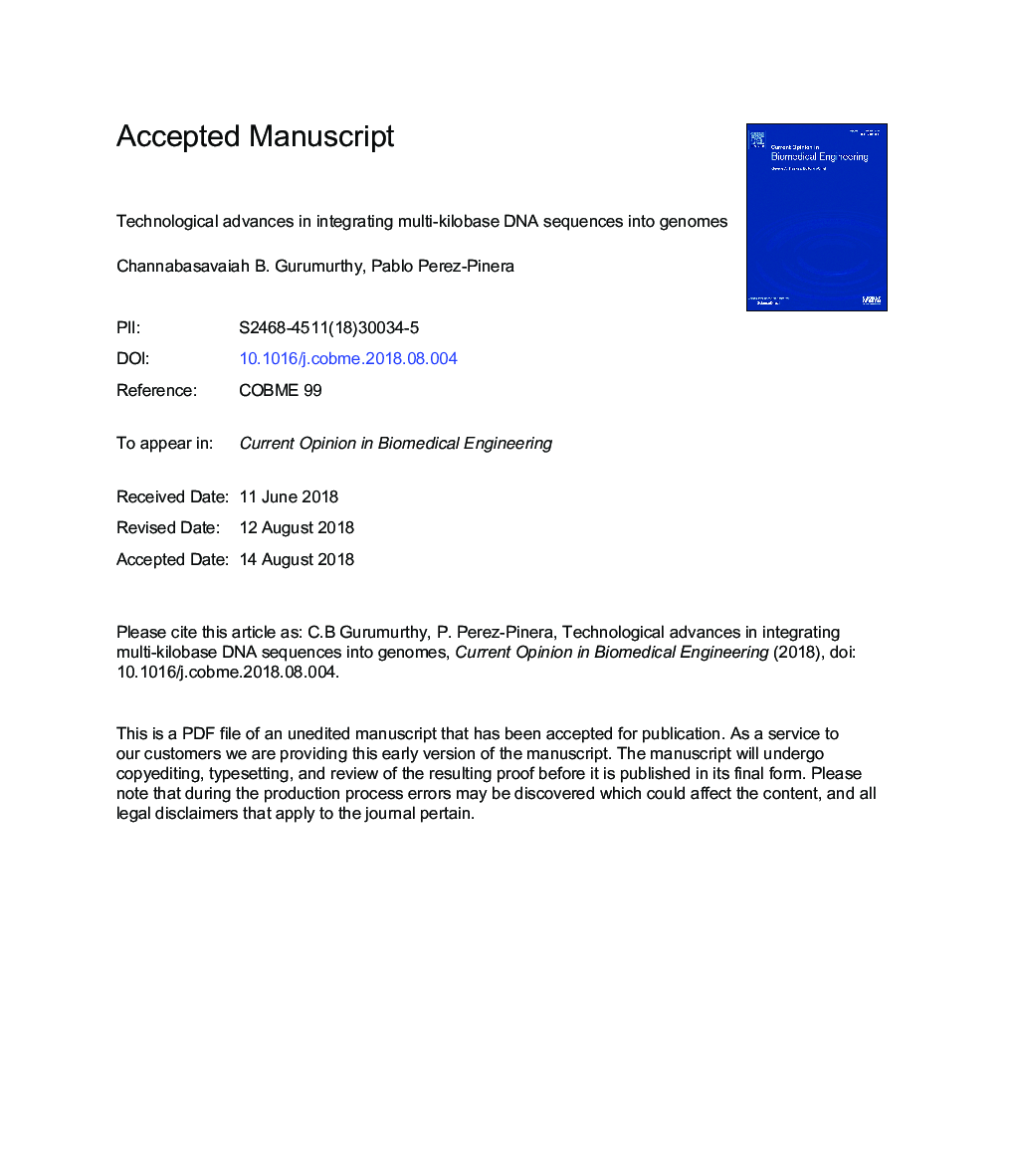| Article ID | Journal | Published Year | Pages | File Type |
|---|---|---|---|---|
| 10145042 | Current Opinion in Biomedical Engineering | 2018 | 22 Pages |
Abstract
Genetic engineering, enabled by rapid advances in programmable nucleases, is rapidly transforming science and society. Notably, despite remarkable progress developing more effective and specific technologies for introducing double strand-breaks in genomic DNA, a large number of potential applications require DNA integration rather than introduction of stochastic mutations. Integration of heterologous DNA has been traditionally accomplished through manipulation of DNA repair mechanisms to favor homologous recombination. However, gene editing applications that rely on homologous recombination are limited by its ineffectiveness for integrating large segments of DNA. Recent advances in genetic engineering have improved the efficiency of homologous recombination and also have identified alternative DNA repair pathways that can be hijacked to accomplish targeted DNA integration. These methods have been utilized to integrate DNA in excess of 200Â Kb in size, which marks the dawn of a new era in gene therapy, humanization of animal models, and even re-writing human genomes.
Keywords
Related Topics
Physical Sciences and Engineering
Engineering
Biomedical Engineering
Authors
Channabasavaiah B. Gurumurthy, Pablo Perez-Pinera,
